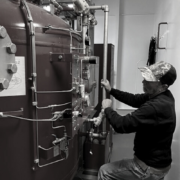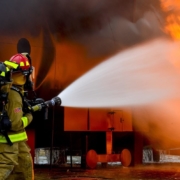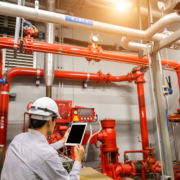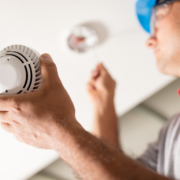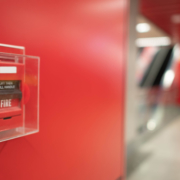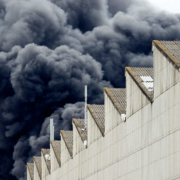Kitchens: More Than a Place to Steal Your Coworker’s Lunch!
Commercial kitchens should be at the top of the priority list for fire safety management.
Educating your employees on proper fire safety protocols is essential to ensure their workplace safety. In order to keep them safe from harm, they need to know what steps to take in the event of a fire—and no, ‘fricken large ones’ is not correct. In an effort to help guide your fire safety training endeavors, we’ve put together a few tips to improve your employees’ education surrounding building fire safety.
Start With Necessary Information
We think it’s safe to say that most employees do not want to sit through a three-hour-long fire and life safety training. To start, ensure you’re touching on all the ‘need to know’ topics of fire safety.
As you dive deeper into fire safety training, you can go over additional topics that may not be as urgent. Urgent topics to review and discuss should include:
- Types of fires that occur in the workplace
- How to extinguish the different types of fires that may occur
- Major causes of fire accidents in the workplace
- The exits are available to employees in case of emergency
Make sure your employees know the various hazards in your workplace.
Cooking Equipment
The National Fire Protection Association (NFPA) claims that the main cause of fires in office buildings is cooking equipment. Office and commercial buildings typically have cooking equipment. Whether there is a mass amount of equipment or one small kitchen for employees, there are safety measures that should be taken as a part of fire prevention.
A few of these safety measures include:
Clean Grease Often
The office kitchen isn’t known for being the cleanest place to cook food, and grease build-up can cause fires to spread quickly.
Ensure Equipment is Maintained Regularly
Old equipment increases fire risk and puts employees and the building property at risk. There are specific commercial kitchen requirements that may apply to an in-office kitchen.
The precautions with gas-fired appliances include being installed by professionals, no oil with gasoline, and only specific locations within the building containing gas-fired appliances.
Kitchens are typically protected by et chemical suppression systems. These Extinguishing methods are specific to the type of cooking fires that may occur in a commercial kitchen. When triggered, the system discharges immediately with a liquid that, when sprayed onto the fire, cools the flames almost instantaneously.
When this liquid comes into contact with oils and fats it creates a foam, subsequently cooling the affected area and preventing the spread from reigniting.
At VFS, your building’s safety is our top priority. With over 25 years of experience, our fire and life safety experts are prepared to ensure your building remains safe from harm.
The equipment we install, inspect, and maintain is only one component of your fire and life safety initiatives. The other aspect includes employee training! Your employees must be educated on what to do in case of an emergency.
Contact us today to talk about how we might work together!



